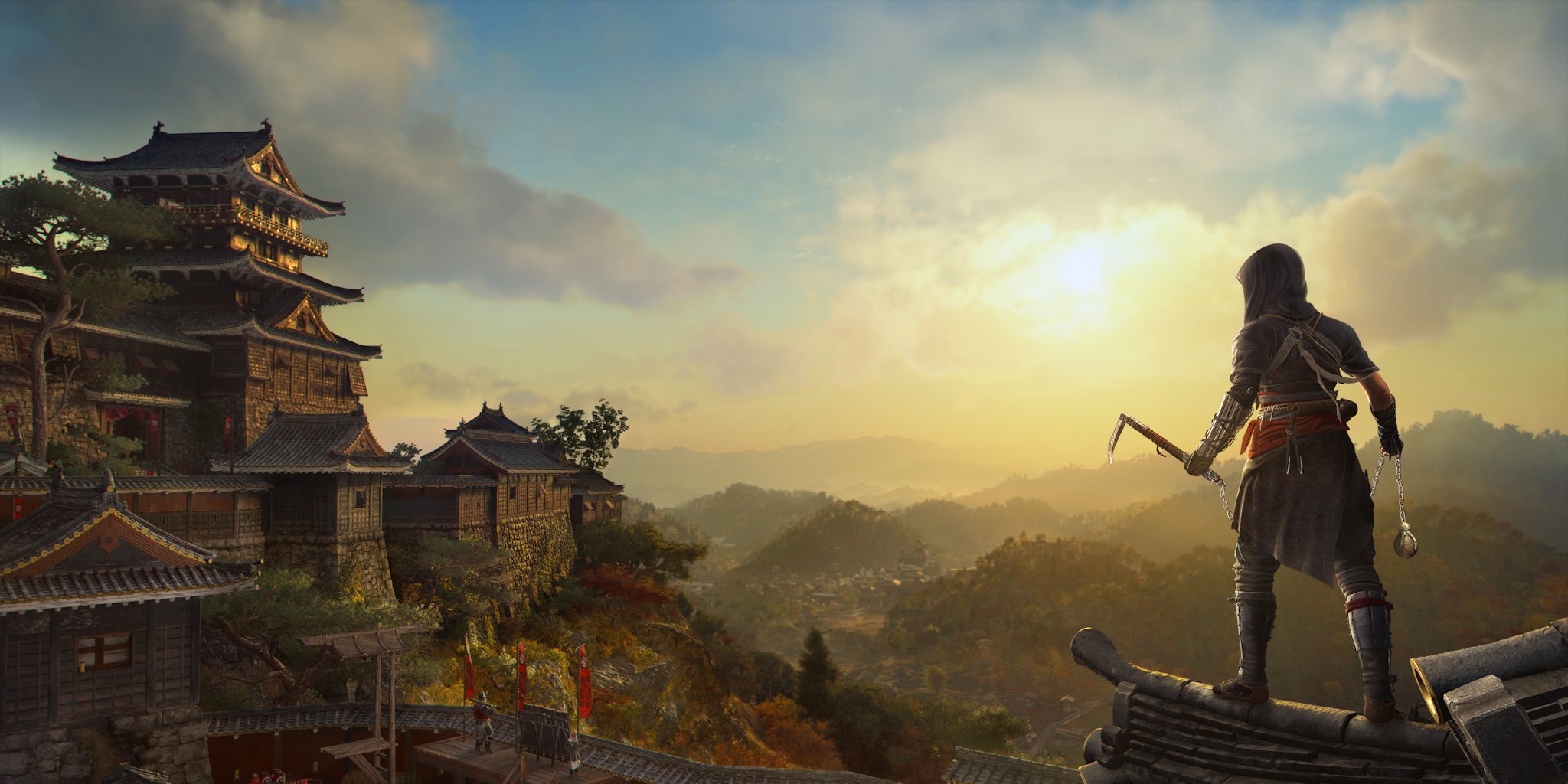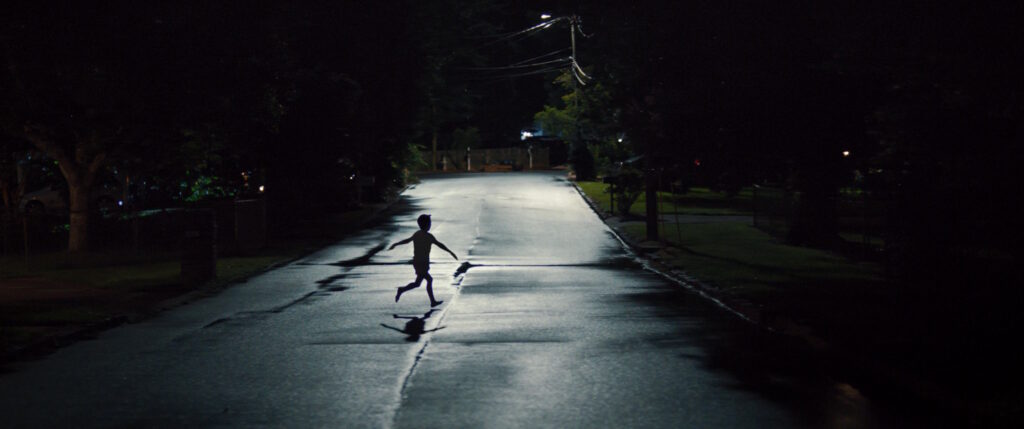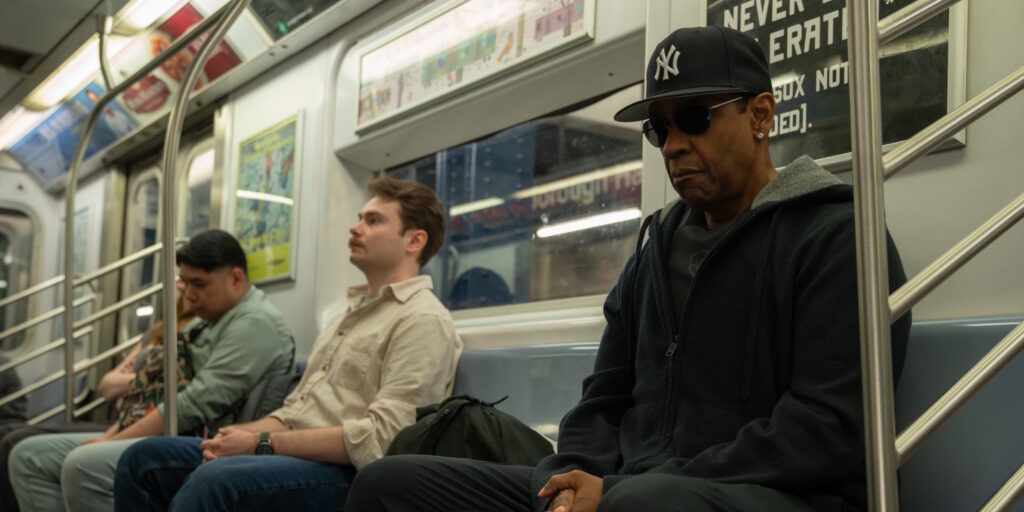“You cannot know anything,” a wise assassin once cautioned, “only suspect. You must expect to be wrong, to have overlooked something.” Ubisoft seems to have kept this quote in mind when developing Assassin’s Creed Shadows, the latest installment in the studio’s long-running action-stealth game franchise. Such a Socratic sentiment may not be immediately obvious to every player who takes up the blade for the 14th (!) mainline entry in the publisher’s absurdly popular, murder-happy series. Mechanically, Shadows is as comfortably familiar as your favorite pair of Saturday sweatpants, maintaining the sprawling, RPG-like format that has been a fundamental part of the franchise’s DNA since Origins in 2017. (With the exception of 2023’s enjoyably bite-sized AC Mirage, which felt like the current-gen game engaging in bit of “old AC” cosplay.)
Indeed, for veteran AC devotees who had been hoping against all evidence for a return to the lithe simplicity of the series’ early days, Shadows will probably be a disappointment. Like its more recent predecessors, Ubisoft’s newest title boasts an enormous open world bristling with activities, as well as the expected RPG-adjacent mechanics such as quests, levels, experience, gear upgrading, and so forth. It’s exactly the kind of game you like, if you like this kind of game. As an “RPG era” convert to the AC franchise, I am squarely the sort of obsessive completionist who grooves on the franchise in its current form, having sunk hundreds of hours into Origins, Odyssey (2018), and Valhalla (2023) – while also being cognizant of the problems with the bloated map-game subgenre that the series now exemplifies.
Yet if Shadows feels like a continuation of the absurdly profitable shape into which AC has perhaps indefinitely settled, it also feels like a critical refinement to the series, one that digests the lessons of the past eight years and adjusts the much-maligned “Ubisoft formula” accordingly. In part, this is attributable to the Shadows’ refreshed focus on the assassination missions themselves, which are returned to their rightful place of honor in the new title’s quest system and storytelling. Yet it’s also about the subtler aspects of the game’s design, the way that Shadows encourages moments of careful consideration and quiet contemplation. This is evident in a broad array of game features, from its semi-dynamic manhunts to the sheer stop-you-in-your-tracks beauty of its setting.
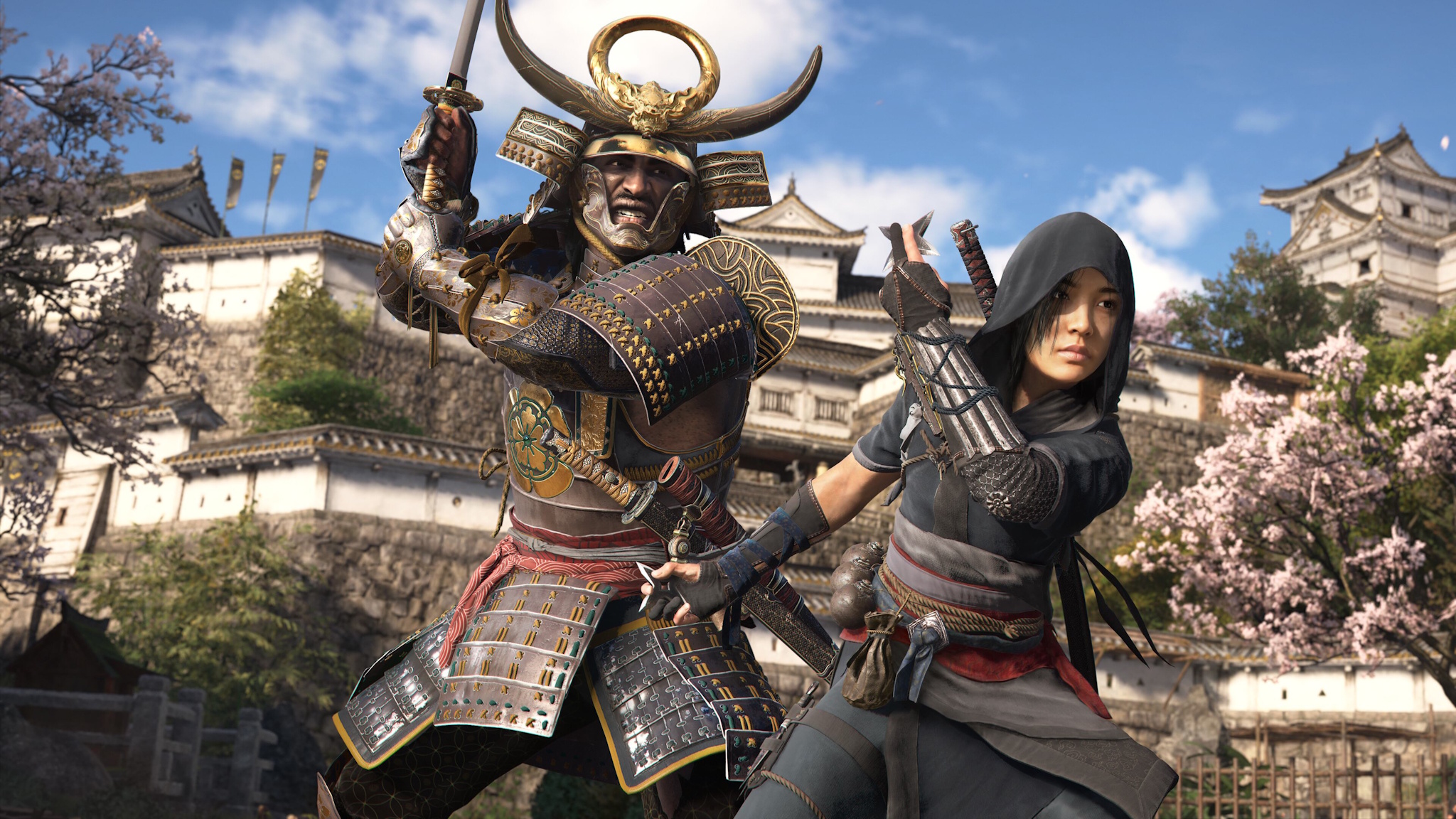
As with all AC titles, the first-order appeal of Shadows lies in its meticulous digital simulation of a particular historical place and time: in this case, 16th-century Japan during the tumultuous Sengoku period. Taking a page from 2015’s AC Syndicate, the game places the player into the boots of not one but two protagonists: a female shinobi named Fujibayahai Naoe, and a Black African samurai named Yasuke, the latter a historical figure. (This is the first such historical protagonist in the franchise, which has typically relegated real-world individuals like Leonardo da Vinci and George Washington to supporting roles in its alt-history saga.) Initially on opposite sides of Oda Nobunaga’s campaign against the ninja-backed peasant uprising in Iga Province, Naoe and Yasuka are obliged to ally against a more insidious foe with dark designs for the future of Japan (and, indeed, the world).
Players can freely switch back and forth between the two heroes, tackling most missions with either protagonist, depending on their preferred play style. Naoe is the more classical AC hero: impressively swift and agile, she prefers to leap across rooftops and slink through the shadows in search of her target. The towering, armor-clad Yasuke, meanwhile, is a terror on the open battlefield. Unsubtle (and unstoppable) as a charging grizzly bear, he is more akin to the war-machine protagonists of Odyssey and Valhalla. One suspects that most experienced AC players will instinctively prefer Naoe and her more stealthy approach, but Yasuke has his uses, particularly in situations where a face-to-face showdown with another powerful samurai cannot be avoided. Still, Naoe frequently feels like the “default” choice, an assassin’s assassin who also fulfills the ninja fantasy that AC players have long been clamoring for in this franchise.
Odyssey and Valhalla received flak (some of it deserved) for sidelining the series’ manhunt element – that distinct, satisfying AC game loop in which you slaughter your way through a secretive, hierarchical conspiracy of evildoers – in a manner that only occasionally intersected with the games’ other storylines. Building on the approach it introduced in Mirage, Ubisoft again positions the assassination missions front and center in Shadows, replacing the usual text-based RPG quest log with a sprawling graphical Objectives screen packed with murder-able targets. The new game doesn’t wholly eliminate the trifling collection quests – there are still long-running missions where you acquire tea sets and paint wildlife and so forth – but the series hasn’t felt this assassination-centric in some time.

That said, it’s the way that these manhunts are handled that truly makes Shadows distinctive. Consistent with other recent entries, the game’s main storyline involves determining the identity of a cabal of masked malefactors and then eliminating them one by one. Unfortunately, it’s possible (even likely) for Naoe and Yasuke to wind up targeting the wrong individual, as the villains are sufficiently cunning to cast suspicion elsewhere and otherwise muddy the investigative waters. Yet it’s in the “side” assassinations that Shadows really shines, deftly illustrating the vexing uncertainty that can haunt the protagonists’ steps, creating a disquieting counterweight to their righteous determination.
Consider a side mission in which a small clan of rogue samurai have been terrorizing the common-born populace around Kyoto. To gain the trust of a wary monk, Naoe and Yasuke are tasked with slaying every member of this family, a bloody endeavor that can be approached in several ways. By pure happenstance, I overhead a group of soldiers discussing this family on the streets of Kyoto, which through a series of clues eventually led me to a crucial revelation: The sole daughter of the patriarch samurai was, in fact, a kind-hearted woman who felt trapped and victimized by her own family. This led to a confrontation in which she begged for her own life and for that of her youngest brother, whom she claimed had no taste for the bloodthirsty cruelty of their father or other siblings.
The near-miss nature of these events set me back on my heels. Had I instead bee-lined to the youngest brother and cut him down without hesitation, the mission would have been resolved much more tragically. This began to throw previous encounters into question in hindsight. Something about my earlier slaying of a crooked merchant never sat quite right with me, given that it was based on thin evidence and questionable motives. Had I made a mistake? Had I strayed from the titular creed, which commands members of the Assassin Brotherhood to stay their blades from the flesh of the innocent? This prompted a noticeable downshift in the way I approached these manhunts going forward, as I spent more time checking and rechecking my evidence before I struck.
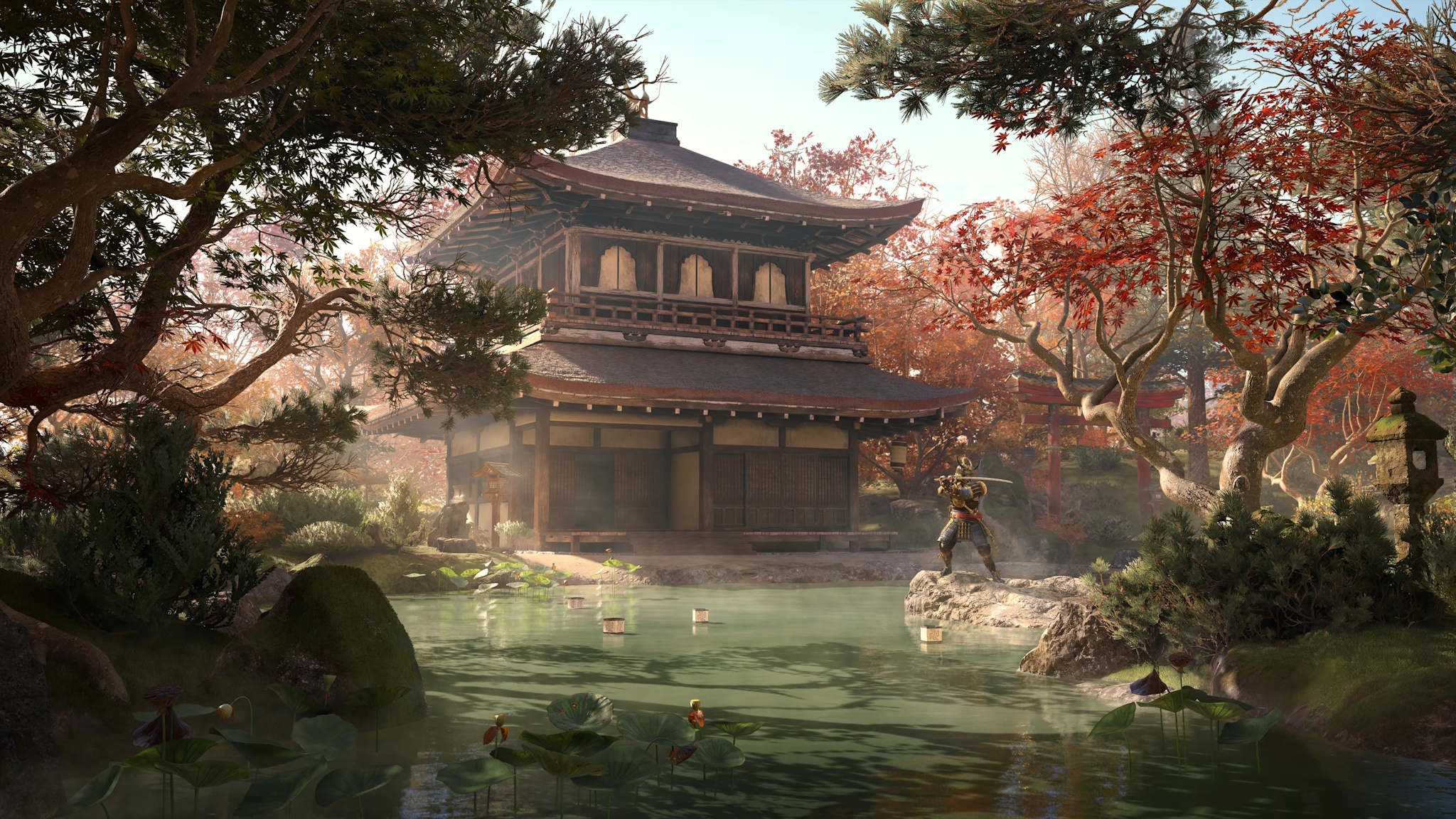
Elsewhere, Shadows tweaks the series’ longstanding thematic interest in a universal concept of justice, using narrative swerves to illustrate that both protagonists can be manipulated into violence by bad-faith actors. (Shades of Origins there.) Naoe’s red-eyed thirst for vengeance often clouds her judgment, and Yasuke’s devotion to his warrior’s code can blind him to the feudal cruelty of his adopted home. The game even walks right up to the notion that a hero who takes a life is inevitably a monster in the eyes of the survivors they leave behind. Shadows doesn’t quite have the courage to follow this idea to the soul-scouring highs and lows of, say, The Last of Us Part 2, but it’s nonetheless fascinating to see AC grapple with violence in this way. (Of course, the game still prefers to ignore the moral dissonance of all the collateral damage caused by Naoe and Yasuke, who easily rack up kill counts in the hundreds over the course of the game.)
This slightly more measured angle to the game’s core investigate-stalk-assassinate loop dovetails agreeably with Shadows’ approach to its open world. Like most Ubisoft titles, the game has a gargantuan map littered with icons representing various castles, temples, shrines, meditation sites, archery ranges, and other points of interest. Again, it’s a familiar formula, but here it feels a little more balanced, a little less like filler to stretch out play times from 30 to 60 hours. Some of this is attributable to the finer details of mechanics and presentation. Each hostile stronghold can be “cleared” once for a unique piece of gear by assassinating select high-ranking samurai, but the enemies, treasure, and construction materials scattered about the area will eventually respawn when the seasons change (more on that in a moment). Indeed, repeatedly infiltrating and robbing wealthy castles can be a useful tactic, as upgrading your customizable ninja hideout requires significant liberated resources.
However, the cultural specificity of many of Shadows’ side activities also helps mitigate the sensation of chore-like obligation that has at times afflicted other AC titles. (All those damned treasure chests in Valhalla …) Many of these activities are strongly embedded in Japanese cultural traditions and associated Shinto and Buddhist beliefs, which pointedly require the player to take a contemplative break from all the bloodshed. Clearing a shine objective only requires that the player pray at two or three altars, while a meditation site involves a simple rhythm mini-game themed to Japanese Buddhist mantras. These diversions might be trifling in the grand scheme of things, but they encourage the player to slow down and savor their surroundings in a way that maintains immersion in the game’s setting.

And what a setting! Whatever its larger merits or flaws as an AC entry, Shadows has already been extensively praised for its gorgeously detailed re-creation of Sengoku Japan, expressed through bleeding-edge graphical advancements in Ubisoft’s Anvil Engine. The game’s world feels uncommonly alive: Wild animals dart across your path, trees whip back and forth in the wind, and storms roll in gradually but relentlessly. In particular, the game’s astonishing seasons system has justifiably received significant attention. Whereas most AAA games are content to pre-script seasonal environmental changes or clumsily tie them to geography – even otherwise superb open-world games like Ghost of Tsushima and Horizon: Zero Dawn are guilty of the “north equals winter” trope – Shadows pulls off an infinitely more impressive feat. Its entire landscape is perpetually changing, cycling through distinct sub-phases of spring, summer, autumn, and winter. These alterations are not just cosmetic, either. Winter storms prompt guards to gather more closely around fires for warmth, for example, while the fallen snow leaves telltale signs of your skulking.
The result is one of the most visually breathtaking open-world games of the current generation, built on both the inherent aesthetic appeal of 16th-century Japan and the emergent qualities of the game’s dynamic landscapes. For the first time in memory, I’ve been deliberately slowing down while traveling through the game world of an AC title, walking instead of sprinting (or trotting instead of galloping). Sometimes I’ve sat for minutes at a time atop one of those classic AC “viewpoints” – perched like a predatory bird on a rock precipice or the pinnacle of a pagoda – and soaked up the beauty of the world. In a contemporary gaming landscape that is so often about rushing off to the next objective, the next trinket, or the next gruesome murder, there’s something to be said for taking the time to live in the moment.
Assassin’s Creed Shadows is now available on PlayStation 5, XBox Series X/S, Windows, and MacOS.
